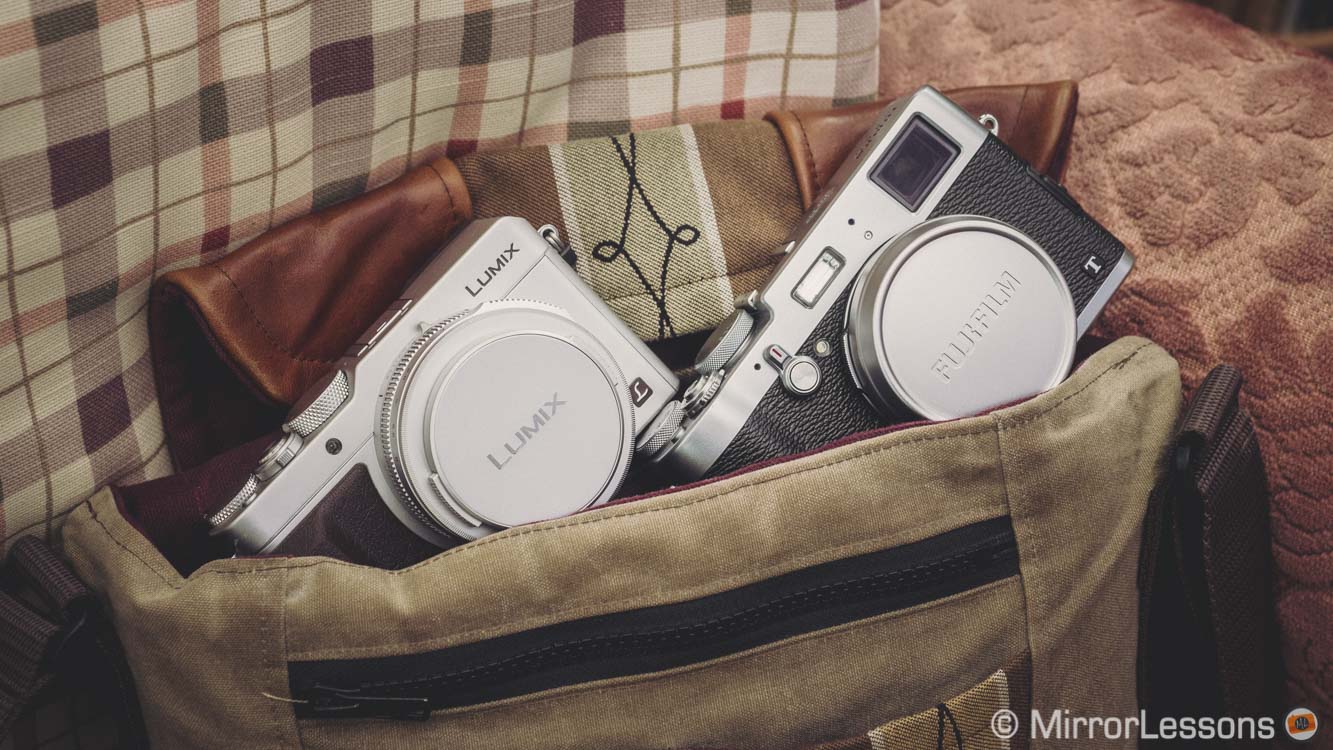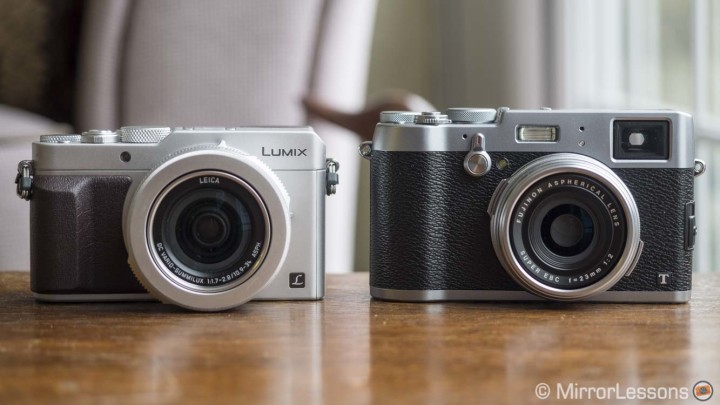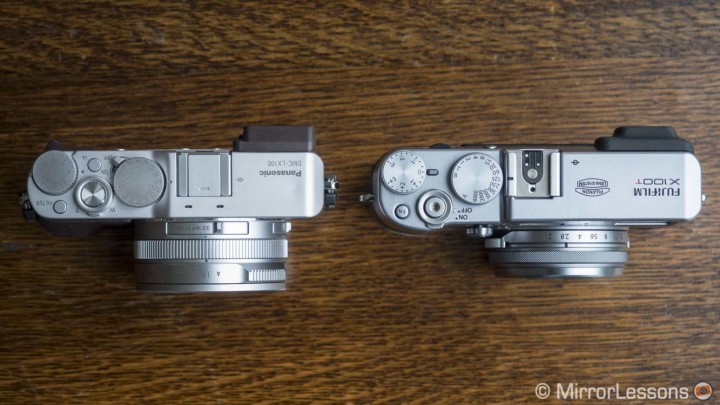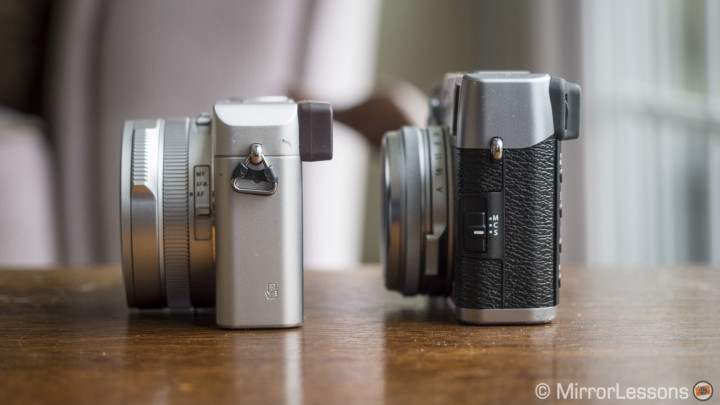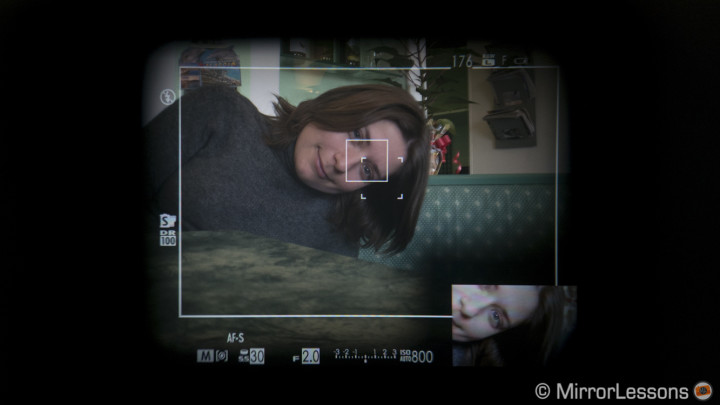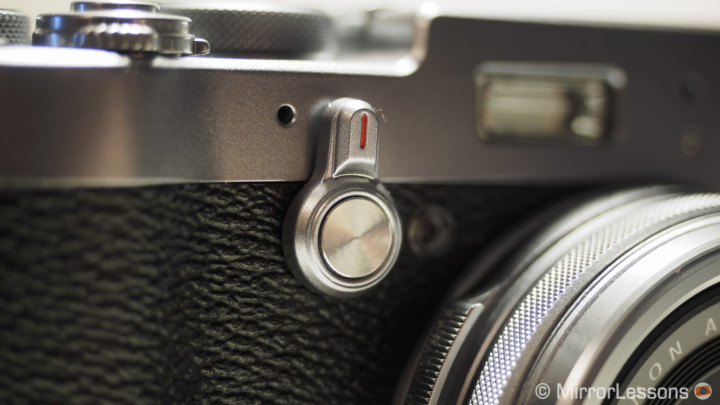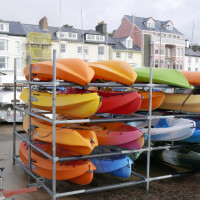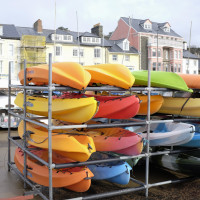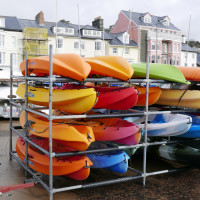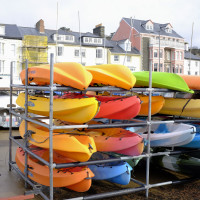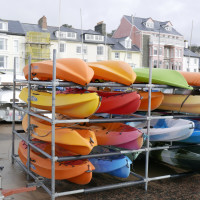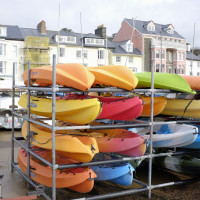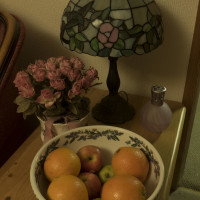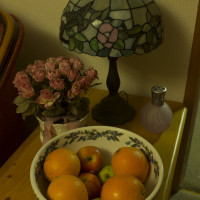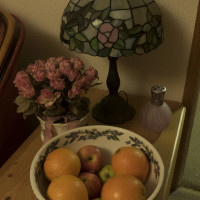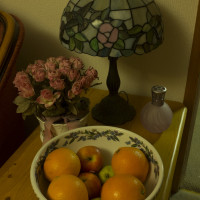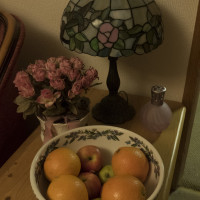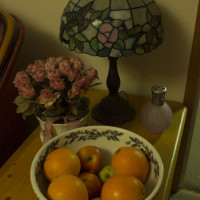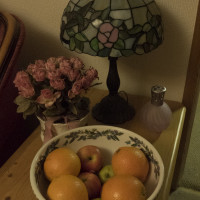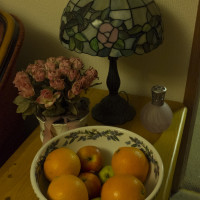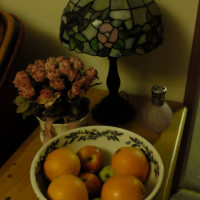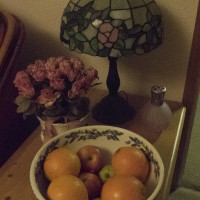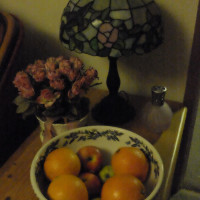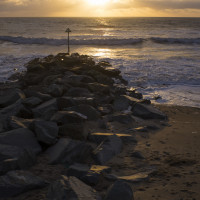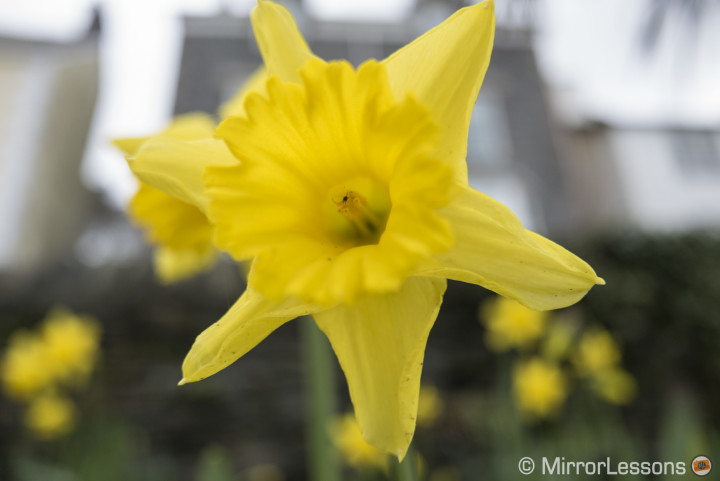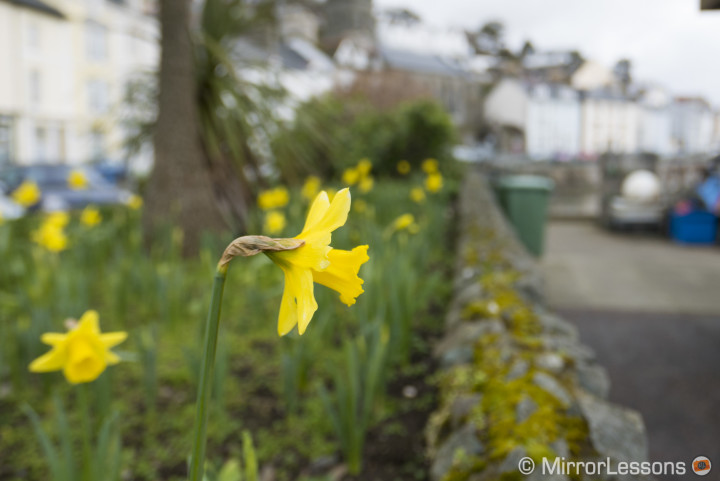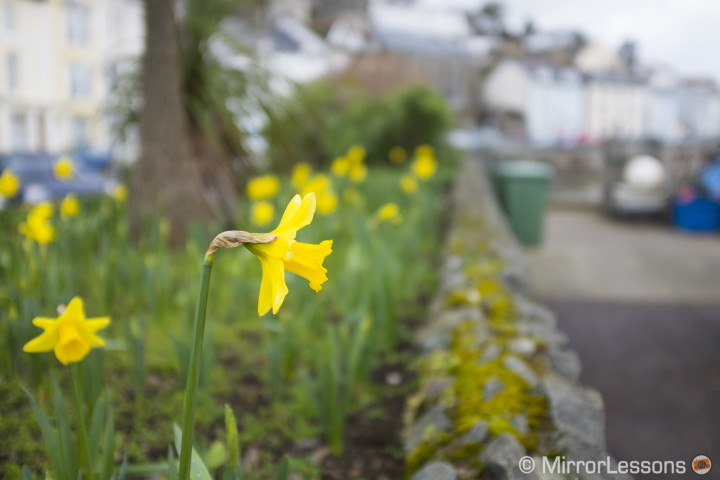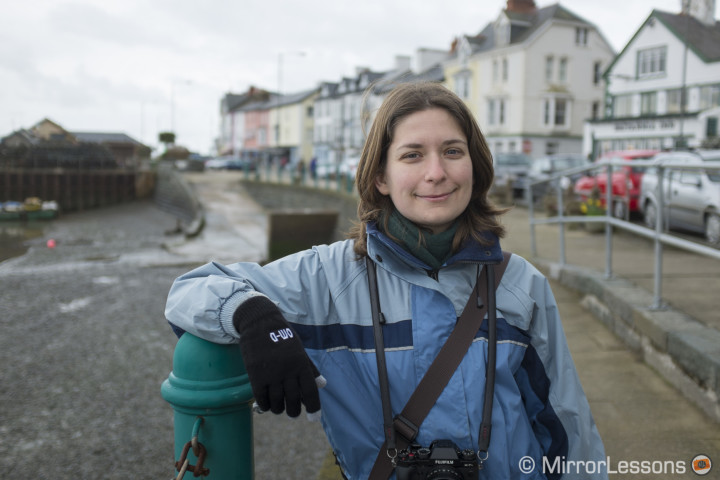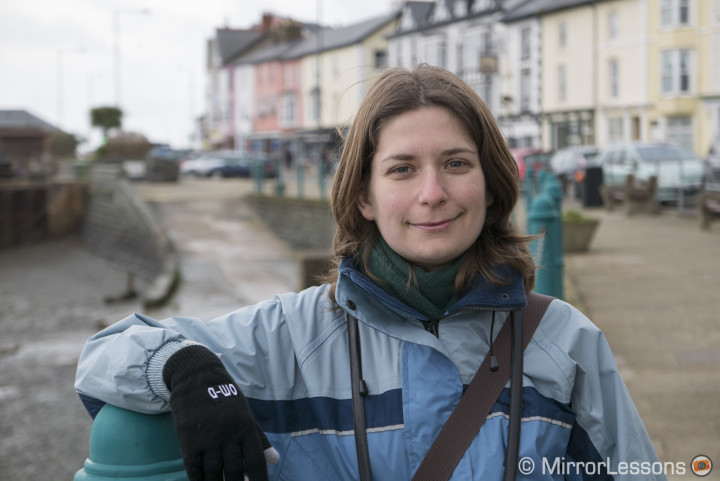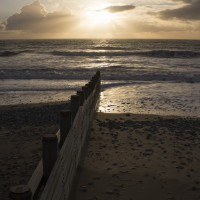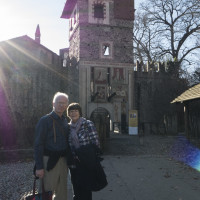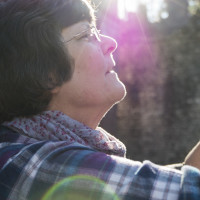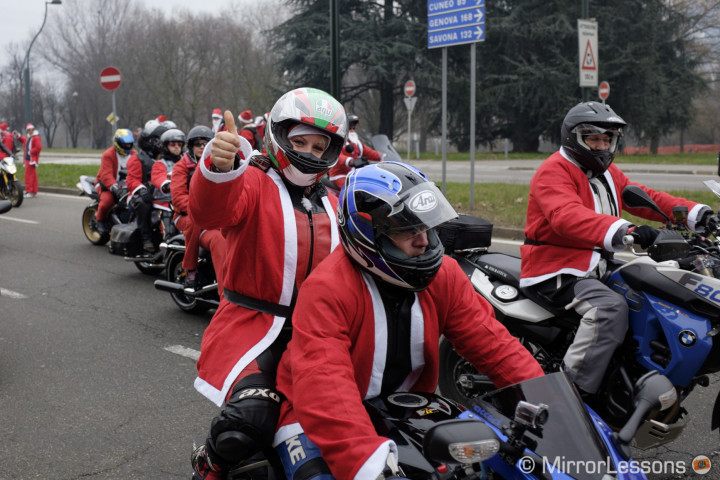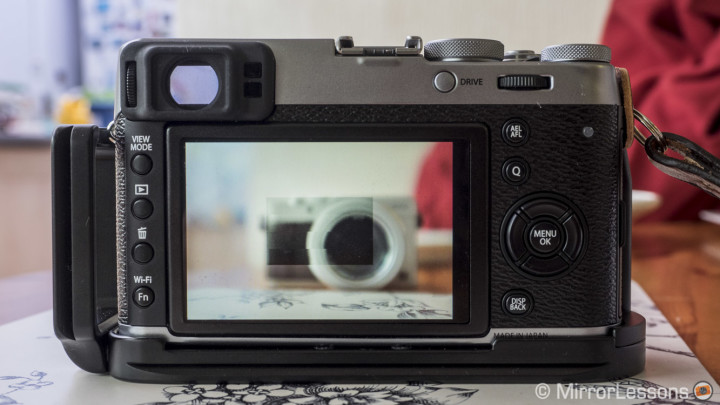Now that smartphones have become popular tools amongst amateurs photographers, the days of entry-level compact cameras seem to be numbered. To keep the segment alive, camera companies have decided to give compacts a new identity through the introduction of high-quality premium compact cameras. No longer are amateur users the target audience. Now, advanced amateurs and even professionals are willing to spend money on small compacts because their capabilities match those of bigger and better systems.
Mirrorless cameras are popular because they are small, but this new wave of compact cameras take this concept even further. They include big sensors (meaning professional image quality) and advanced features while prioritising portability and compactness. Since the beginning, Fujifilm has enchanted the market with its popular X100 series. Panasonic too decided to join this new niche market by introducing the Lumix LX100. While there are many differences between the two, we couldn’t help but think that they represent the best that this new niche market has to offer today.
The Lumix LX100 is a Micro Four Thirds camera with a non-removable fast zoom lens and advanced video capabilities including 4K recording. The Fujifilm X100T is the latest iteration of the X100 series which is, as mentioned above, very popular amongst Fujifilm users. It has an APS-C sensor and a fixed prime lens. Thanks to its zoom lens, the LX100 seems to suit a variety of genres better but the truth is that both cameras work well in a variety of situations.
Want to find out more about these two premium compact cameras? Then keep reading because there is much to compare!
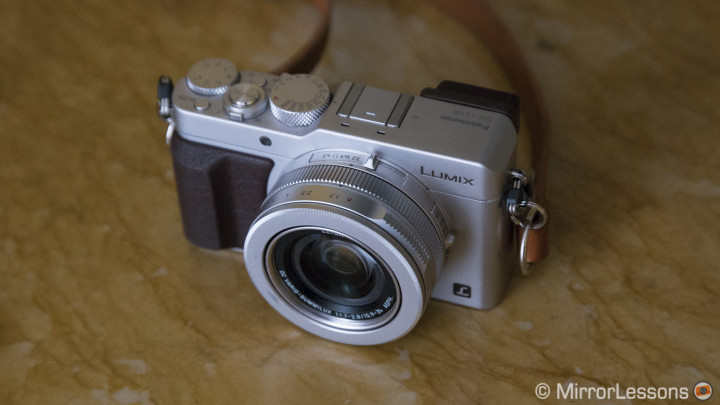
Panasonic LX100
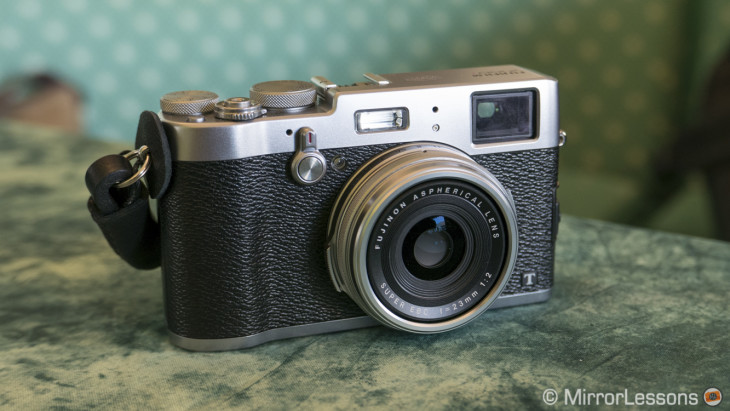
Fujifilm X100T
Main Specs
The biggest differences between these two cameras can be found in their lens type and sensor size.
The X100T has a fixed prime 23mm lens (35mm equivalent) with a fast aperture of f/2. It is the same lens found on the original X100 and the X100s. The camera features an APS-C sized sensor with Fuji X-Trans II technology and is 1.5x bigger than a M4/3 sensor.
[expand title=”The Panasonic LX100 Main Specs”]
- Sensor: 16.8 million pixels MFT sensor (12.8mp effective pixels)
- Lens system: fixed 10.9-34mm (24-75mm in 35mm equiv.) f/1.7-2.8
- Weatherproof: No
- Internal Stabilisation: Yes (Power O.I.S.)
- Autofocus: Contrast AF with 49 points and DfD technology
- Continuous shooting: 11 fps (High), 7 fps (Low)
- ISO Sensitivity: 200 – 6400 ISO (extended down to 100, up to 25600)
- Shutter Speeds: 1/4000 to 60 seconds, 1/16000s to 1/2s with electronic shutter
- Viewfinder: electronic viewfinder with 2,764k dots, approx. 100% FOV coverage and 1.39x magnification
- LCD Screen: fixed 3″ LCD monitor (921k dots)
- Movie recording: UHD up 25fps, FHD up to 60fps, manual controls
- Built-in Flash: No (but external flash provided)
- Extra Features: WiFi, 4K Photo, Stop Motion, Interval Time Shooting, Multiple exposure, Silent Mode
- Dimensions: 114.8 x 66.2 x 50mm
- Weight: 393g (including battery and memory card)
[/expand]
[expand title=”The Fujifilm X100T Main Specs”]
- Sensor: 16.3 million pixels APS-C X-Trans CMOS II
- Lens system: fixed 23mm f/2 (35mm equivalent on full frame format)
- Weatherproof: No
- Internal Stabilisation: None
- Autofocus: Hybrid AF (TTL contrast AF / TTL phase detection AF) with 49 points
- Continuous shooting: 6 fps (High), 3 fps (Low)
- ISO Sensitivity: 200 – 6400 ISO (extended up to 51200, JPG only)
- Shutter Speeds: 1/4000 to 30 seconds, 1/32000s to 1s with electronic shutter
- Viewfinder: Hybrid Viewfinder: LCD electronic viewfinder with 2,360k dots, approx. 100% FOV coverage and 0.65x magnification / Optical VF (Reverse Galilean type) with 92% FOV coverage with ERF (Electronic Rangefinder)
- LCD Screen: fixed 3″ LCD monitor (1040k dots)
- Movie recording: 1920 x 1080 pixels (60fps to 24fps), manual controls
- Built-in Flash: yes
- Extra Features: WiFi, Panorama, Interval Time Shooting, Multiple exposure, Silent Mode
- Dimensions: 126.5 x 74.4 x 52.4mm
- Weight: 440g (including battery and memory card)
[/expand]
Ergonomics and Design
Both cameras have a design that reminds us of film cameras. This aspect is enhanced by the mechanical dials and rings that are present on both models.
The LX100 looks like a small rangefinder camera but incorporates a modern design. Like the GX7, Panasonic did a very good job at creating an elegant look that synthesises tradition and innovation. My only complaint is that the marks on the dials and aperture ring are a little too light on the silver model and therefore are sometimes hard to read.
The X100T on the other hand truly looks like a classic rangefinder camera. It is certainly one of the best mirrorless camera designs from a purely aesthetic point of view. The similarity to Leica cameras in particular is quite striking thanks to the presence of the optical viewfinder.
Both have a beautiful and elegant design and come in two different colours: black or silver. Whereas the X100T looks classic in both colours, the silver LX100 has more of an elegant and fashionable look.
The build of both cameras is very good but I noticed that the paint on the LX100 body can become scratched quite easily. As for the X100T I have concrete proof of its robustness because I accidentally dropped it. Despite a few small scratches at the bottom, it still works perfectly fine and didn’t suffer any negative consequences. I can’t confirm the same for the LX100 but in a way I take this as a positive thing because it means I haven’t dropped it yet. Jokes aside, let’s talk about ergonomics…
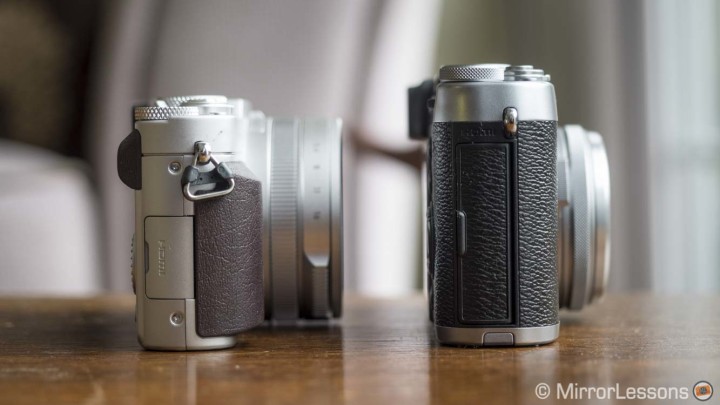
Thanks to its faux-leather front and rear grips, I found the LX100 body easier to hold, despite being slightly smaller. The lens is slightly larger and more prominent meaning that it also enhances your overall grip on the camera. The aperture ring is slightly larger and is near the end of the lens which makes it easier to grab and turn. The function ring also has a nice feel to it and is smooth to turn.
Most of the dials and buttons are solid and easy to reach with your fingers. My only complaint regards the exposure compensation dial as it is a little flimsy and can turn inadvertently inside a bag or pocket.
One of the few annoying things is related to the lens cap. It can easily pop off when carrying the camera inside a bag for example. Panasonic did include a cap cord to make sure you don’t lose it but I personally don’t like having my lens cap hanging off the camera.
The X100T has a good grip but can also feel slippery because it lacks a more prominent grip on the front and a thumb grip on the rear. This is why I like to use it with a wrist strap. You can also consider some optional grips like the Photomadd grip or a Lensmate thumb rest.
The mechanical dials are excellent to use. The focus ring on the lens is also very smooth but the aperture ring is sometimes harder to reach when looking through the finder because it sits too close to the body. There are two small tabs that make it easier to turn but they are not always easy to find depending on the ring position.
I do like the lens cap as it covers the entirety of the lens instead attaching just to the very end. It adds a touch of elegance and is really hard to lose.
Functionality & Ease-of-Use | LX100 vs X100T
Both cameras are very straightforward to use and offer a good level of customisation.
The shutter speed and exposure compensation dials as well as the aperture ring make it easy and simple to deal with the most important settings. Both cameras have a switch button on the side to quickly select autofocus or manual focus.
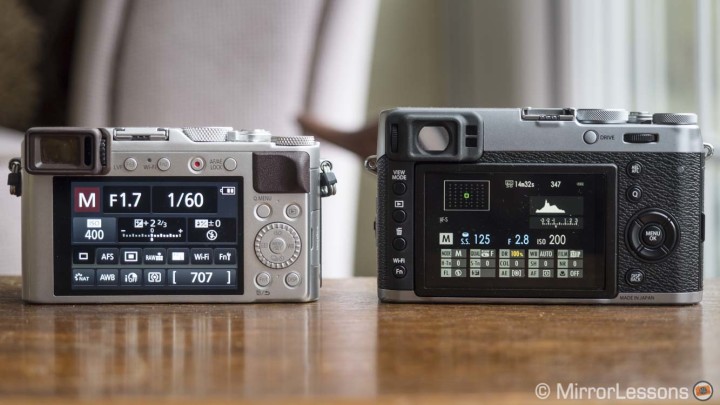
The LX100 has a pre-configured command wheel on the rear where you can quickly set your ISO sensitivity, drive mode, AF mode and white balance value. By rotating the wheel you can fine-tune the shutter speed pre-selected with the dedicated dial. There are also three Fn buttons that you can customise with 39 different options. The quick menu button will also allow you to access additional settings such as metering, movie recording settings and picture profiles.
The only two buttons I felt were somehow a “waste of space” were the iA and Filter buttons on top. While they can be interesting for users who want to instantly switch the camera to Auto mode or use fun picture effects, I wish they could have been customisable for more advanced photographers. In the end, Heather and I never used them, so for us there are two useless buttons sitting on top of the camera.
On the side of the lens there is a handy AF/MF switch that can also activate macro mode. The function ring on the lens can be configured to 5 different settings in addition to its default functionality. The aspect ratio switch on top is also easy to access. The aperture ring works in 1/3 Ev clicking steps with good detent resistance and only becomes a little weak between 1.7 and A (auto).
The X100T has 7 function buttons. You can choose to assign a different function to each of them or use the four arrow pads to change the focus point. The latter option is my favourite but the amount of Fn buttons is then reduced to three. A partial solution to this is to customise the Quick Menu which already offers 16 different settings. There is also a command dial on the rear that allows you to fine-tune the shutter speed and activate focus magnification by pressing it. Unfortunately I find it too flimsy–it can often be accidentally pressed or turned. Another nice thing its that the functions can be edited quickly by holding either the DISP/BACK or Q button instead of digging in the menu.
The focus ring can also be used for other functions such as playing back images in playback mode but you cannot assign other functions to it in shooting mode. The aperture ring works in 1/3 Ev clicks. As with the LX100, there is a slight difference in the detent resistance when your reach the A setting but it is easier to perceive because of the lack of 1/3 steps at that point.
The AF switch on the side allows you to choose AF or manual focus as well as continuous autofocus, an option I prefer having in this location instead selecting C-AF via a button.
One thing I don’t particularly like about the LX100 is the electronic zoom mechanism. You can either use the function ring or the zoom lever on top. There is the option to make the zoom movements smooth or to jump to preset focal lengths. I find the latter more precise but it is nothing like a mechanical zoom ring. I guess it is a compromise that Panasonic engineers had to make but it is somehow a shame on a camera that is supposed to give you a manual and mechanical experience.
One thing I don’t like about the overall button layout is that it looks like there is an empty space on the rear-top area next to the viewfinder. It could be filled with additional function buttons. Also unlike the LX100 there isn’t a dedicated movie recording button so you have to use one of the Fn buttons to assign that specific function.
Both cameras have a quality LCD display but neither can be tilted of flipped. They also lack touch sensitivity. While it is a technology that has been ignored by Fujifilm from the beginning, it is surprising move by Panasonic as they’ve implemented many useful features on other cameras such as the GH series and the GX7. The GH4 for example can be set by using either the excellent button/dial layout or the touch screen. Talking about ease of use, both cameras have well-structured menus but I find the LX100 (as with all Lumix cameras) to be the most clear and comprehensive.

When it comes to the viewfinder, there is a noticeable difference between the two cameras.
The LX100 has an electronic viewfinder with lots of resolution (2764k) but it is smaller with slight smearing flaws on the finder glass. It is bright with good colour accuracy. You can set the live view to either 30fps or 60fps for both the LCD and the EVF but performance decreases in low-light conditions. You can manually adjust brightness, contrast, green/magenta and warm/cool tints.
The eye sensor is also faster when you bring the camera to your eye.
The X100T viewfinder is one of the camera’s major highlight. You might have already heard about Fujifilm’s hybrid viewfinder technology which allows you to switch between an optical and electronic viewfinder. The X100T goes a step further by introducing a tiny screen inside the optical viewfinder called an ERF (electronic rangefinder). The finder is also bigger and the EVF has a better frame rate which remains constant in low-light conditions (with the downside of increased noise). Another interesting feature is that you can choose to disable the picture profile preview in both the viewfinder and monitor. This way you get a Raw preview of your image.
While the LX100 viewfinder is satisfying overall, the X100T certainly wins here not only because of its bigger EVF but also because of the OVF and ERF options, as they can satisfy many different types of users.
[stextbox id=”text-box2″]
X100T viewfinder: without going too in-depth into the technology (you can read this article here if you are interested), the X100T has a reversed galilean optical viewfinder that will be familiar to all rangefinder users. It is bright, it is big, has no time-lag whatsoever and also includes digital displayed information such as frame and AF point guidelines to compensate for the parallax limitation. If you activate the ERF, you can also have a small screen at the bottom right of the finder that will show a magnified preview of the AF area you are currently using. This helps especially for manual focus, something that up until now was almost impossible to achieve with the OVF. But if you prefer to work with an electronic viewfinder that will give you an accurate preview of your frame, exposure and colours, you just toggle the viewfinder selector on the front and you can instantly switch to the EVF.
[/stextbox]
Image Quality
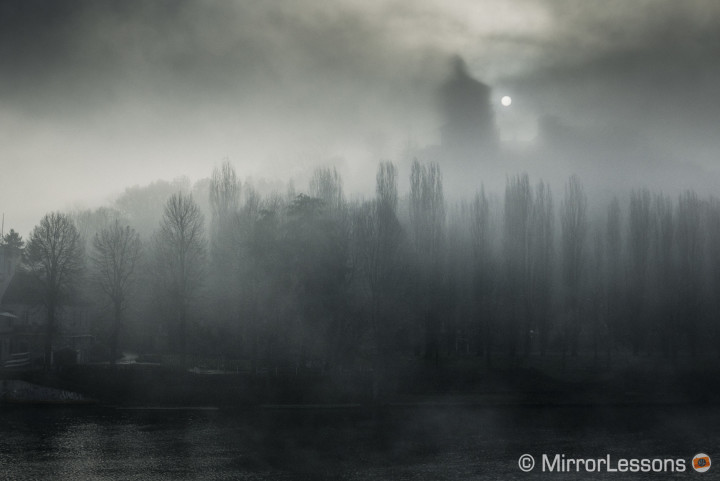
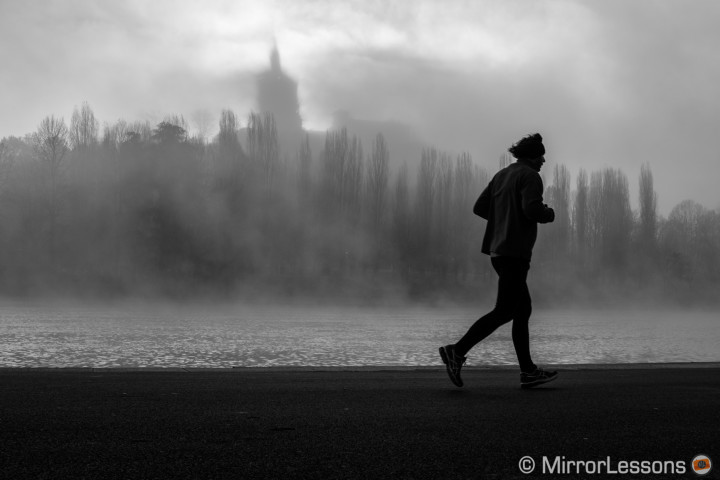
Let’s start by saying right up front that both cameras can deliver excellent image quality. This is the case with most mirrorless cameras we have had the chance to test these days, so the differences between the two are more subtle than you might think. As I stated earlier, the X100T has an APS-C sensor with 16MP. It is the same sensor that Fujifilm already uses in its other cameras like the X100s, the X-T1 and the X-E2. As for the LX100, the sensor is the same 16MP Micro Four Thirds sensor found in the GX7. But the catch here is that the lens doesn’t cover the whole sensor area but only an average of 85%. The reason for this is the multi-aspect ratio possibility offered by the camera.
[stextbox id=”text-box2″]
The LX100 multi-aspect ratio: Before we begin, let it be known that you can choose different aspect ratios on the X100T or any other camera. In this case 3:2 is the native sensor aspect ratio but 1:1 and 16.9 are also selectable. When you select the second or third option, the camera will simply crop on the horizontal or vertical line to produce a JPG with the ratio selected (the RAW file remains unaltered at 3:2). The result is a different diagonal angle of view when not using the original 3:2 aspect ratio.
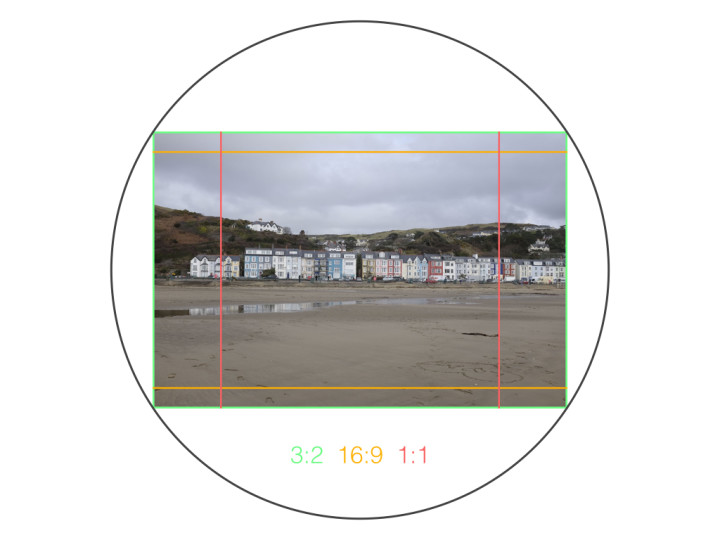
With the LX100, things are a little bit different. The camera uses a lower megapixel count (between 12 and 9MP) depending on the selected aspect ratio. The lens doesn’t cover the whole surface of the sensor so while it is indeed a Four-Thirds sensor, the effective area used by the camera is always cropped for multi-aspect shooting and that results in having the same diagonal angle of view for any given ratio (except 1:1). There are four options in total.
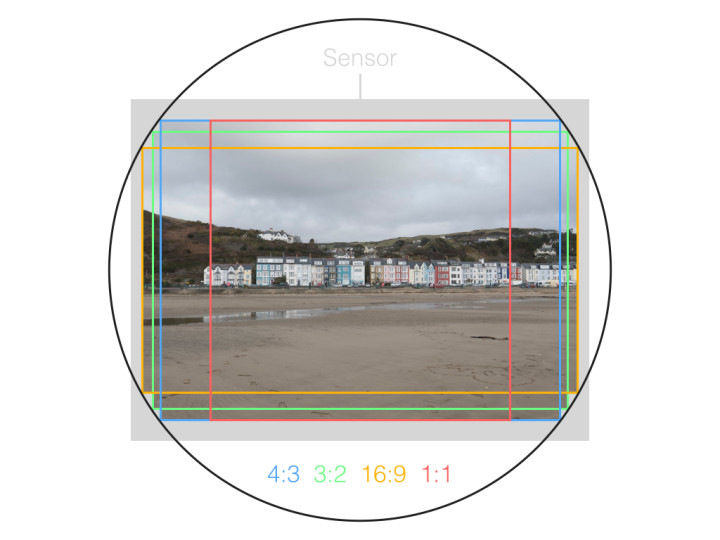
So if we compare for example these two 16:9 pictures taken by the X100T and the LX100 at the same focal length, you can see that the LX100 version is slightly wider.
Now is this difference really relevant? In my opinion, not really. Personally I rarely use a different aspect ratio than the original sensor dimensions so the multi-aspect feature isn’t a big deal for me. Yes, the LX100 keeps the same diagonal field of view but it has less resolution even if the difference between 16MP and 12MP is negligible.
[/stextbox]
Let’s dig further and see what other relevant differences there are between the two cameras. Certainly we can find some regarding the colour reproduction.
The LX100 has the typical colour rendering of Lumix cameras. They are very rich and modern (or digital if you prefer). The picture profiles offer basic levels of customisation including contrast, saturation, sharpness and noise reduction. Sometime the Auto WB can be slightly cold but the tint can be adjusted towards a warmer or cooler colour. I don’t find the differences between the various profiles that important so I usually use either the standard or vivid profile (and most of the time I use the Raw file in Lightroom anyway).
The X100T stands out for its colour reproduction. The film simulation modes (a.k.a. picture profiles) give an interesting and rich look to your JPGs. There are several profiles and each one of them has its own unique characteristics. The latest one, Classic Chrome, is perhaps the perfect example of Fujifilm’s philosophy when it comes to colours: it is not a preset that will oversaturate the colours too much. On the contrary it gives a muted look that suits reportage and documentary photography very well. This is what I like about the Fuji film simulation modes: I can easily choose one according to what I want to shoot (street, portraits, landscapes). The monochrome profiles are also very good. The Auto White balance works well but sometimes can tend towards yellow especially in artificial light.
When it comes to low-light performance, the X100T has an advantage because of its larger sensor and less invasive noise at higher sensitivities. The difference starts to be visible at 1600 ISO. That being said in a real world situation the difference between the two is not huge.
I consider the Lumix’s performance acceptable up to 3200 ISO or even 6400 ISO if you don’t pixel peep too much. At 12800 and 25600 ISO the image quality really starts to decrease but you are still able to shoot Raw and therefore have the advantage of working with a less compressed file.
6400 ISO is also the limit I set for the X100T. At extended values, the camera produces less noise but will work in JPG mode only. This means that while the pictures are less noisy they are also softer because at those sensitivities the processor engine of the camera will apply noise reduction regardless of your settings. The X100T can also reach 51200 ISO but that value is almost useless as the quality decreases significantly.
The LX100 has another slight advantage and that is optical stabilisation.
The X100T doesn’t have any stabilisation on the sensor or the lens so I wouldn’t go past 1/30s to be safe. With the LX100, I can push it to 1/10s or 1/8s. As such, the camera you consider more appropriate for low-light shooting is also related to what you need to do exactly. While the differences are there, they deliver a very similar result.
As for dynamic range, there are differences leaning in favour of the X100T and its bigger sensor. In the example below I shot the same scene with the two cameras using the same settings and as you can see, I would have no problem working with either Raw file. The difference is that the X100T retains more information in the highlights. If I decide to lower the highlights as much as possible, I will recover more detail in the clouds surrounding the sun. In the shadows, I get slightly less noise when recovering the darker areas.
The LX100 lets you adjust highlights and shadows up to to 5 steps. It also comes with different presets. Additionally, the iDynamic function will automatically adjust the DR according to the exposure settings. Those functions affect the JPG version only.
The X100T also allows you to increase or decrease highlights and shadows but the result will only affect the JPG files. There is also a DR (Dynamic Range) setting that will increase the DR at higher ISOs by 1 or 2 Ev.
Of course the results we’ve seen are also influenced by the lens performance, and as we know, the two camera have very different lenses. The X100T has a fixed f/2 prime lens while the LX100 has a variable f/1.7-2.8 focal length lens. Given the fact that the LX100 has a lower megapixel count and doesn’t use the whole sensor surface, we could conclude that the X100T should render sharper results. However in my findings I actually find their performance similar. In fact, the LX100 may even have slight advantage.
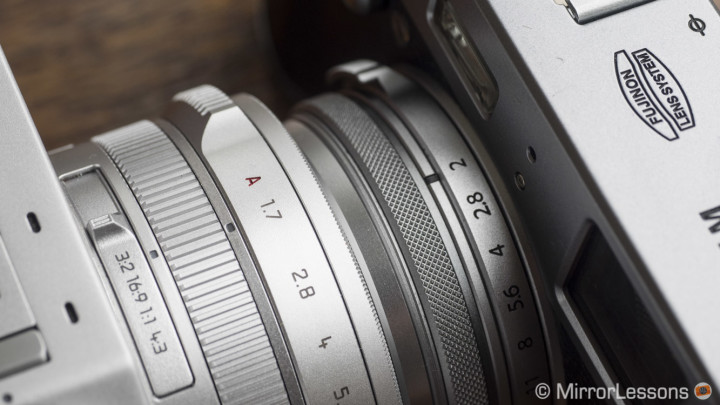
The zoom lens of the LX100 has been designed by Leica and performs exceptionally well considering the focal length covered, its fast aperture and its very small size. The lens gives good performance at its fast aperture of 1.7 and the optimal sharpness is reached at f/5.6 and f/8. At f/16 it suffers from diffraction, typical with any M4/3 lens. There is some slight vignetting from 1.7 to 2.8 both at the shortest and longest focal lengths but it is well-contained. Purple fringing is almost absent and I haven’t found any relevant distortion or chromatic aberration.
The 23mm lens on the X100T performs well at f/2 but reaches its optimal sharpness at around f/8. Sharpness remains good even at the slowest aperture of f/16 with little diffraction present. Vignetting is well-controlled as well but disappears completely only around f/4 or f/5.6. Purple fringing, chromatic aberration and distortion are absent completely.
When both cameras are set to the same equivalent focal length of 35mm, I find the LX100 slightly sharper when I enlarge the pictures (yep, I’m pixel peeping). The differences are negligible once again but I think it is important to highlight because it means that the lens on the LX100 is really good. The two examples below are 100% crops from OOC JPG so keep in mind that the processor engine could be influencing the sharpness a little.
When it comes to bokeh and out of focus rendering, with this kind of camera there is always some sort of compromise. If you really want beautiful out of focus areas, you have to focus close. Both lenses offer some sort of macro mode.
The LX100 can focus as close as 3cm at its shortest focal length of 10.9mm (24mm equivalent). As soon as you start to zoom in, you will lose these close focusing capabilities progressively. It is a good thing to keep macro AF activated for overall short focus distance as the camera will focus quickly.
In macro mode the X100T can focus as close as 10cm but since it has a longer focal length, the result in the end is pretty similar to the one produced by the LX100.
So focusing close will give you more bokeh but what about normal situations. If I compare the two cameras at the same focal length of 35mm, the bigger sensor of the X100T helps to give a shallower depth of field but I do find the LX100’s bokeh interesting with a bit more “character” than the one of the X100T lens. You could say that the lens on the X100T is one of the only elements that works well but doesn’t make the camera stand out. It is a sharp lens that suits the camera perfectly especially because of its small “pancake” size.
Another difference I noticed between the two cameras is that the X100T lens handles flares better while on the LX100 they can appear frequently in the form of a small rainbow or large green orb. It can also suffer from purple flares (something I am now used to on MFT cameras). With the X100T, you will get flares only at a certain angle and the main cause is the absence of a lens hood (it has to be purchased separately). The LX100 doesn’t come with a lens hood and that certainly doesn’t help.
Autofocus and Performance
Here comes another important difference between the two cameras in my opinion. As much as I appreciated the improvements made by Fujifilm to its autofocus performance, when I grab the LX100 it is faster, period. Both cameras will satisfy you in most situations but the differences are there so let’s take a look.
The LX100 has a contrast detection autofocus system and that could lead us to think it is slower but it is actually the contrary. The camera incorporates 49 AF areas but also the DfD (Depth from Defocus) technology that Panasonic introduced with the GH4. Simply put, the DfD technology allows the camera to determine its distance from the subject by evaluating two images with different depths of field. It then compares that information along with the characteristics of the lens to deliver the best possible results. And of course all this is done in an instant (approx. 0.07s) so it doesn’t slow down operations.
In the real world, the LX100 is really fast. The only negative point I found is that in AF Single and in backlit situations, the camera will sometimes confirm that it’s locked on but will take an out-of-focus picture. It happened more than once especially in backlit situations with high contrast. The chances of this happening diminishes when using a larger focus point.
The LX100 has several AF modes including 49 areas where the camera automatically determines which AF area to use, custom multi which allows you to select a portion of the 49 AF points, single and pinpoint. The final option allows you to be very precise with the focus point. The 49 areas mode works well even though it sometimes confuses the subject or selects too many different points. The custom mode would be more interesting if you could literally slide your finger along the screen and create lines. On the LX100 it is more limited.
The X100T has good autofocus performance but it is sometimes unpredictable. In AF-S, it is best to set the smallest AF point to get more accuracy but there are still a few occasions where it won’t focus in a scene that doesn’t present any challenging conditions: no backlight, no low light, nothing out of the ordinary. The AF performance can be enhanced by activating the High Performance mode in the menu but I still don’t trust it completely.
The Multi-AF works well: it is fast and reliable and does a good job at guessing the correct AF points.
Both cameras offer good continuous shooting capabilities but here again the LX100 is the clear winner.
Heather tested the camera in different action conditions such as a marathon and bike parades and it performs really well. Even when it misses a few shots in AF-C or tracking, the LX100 manages to regain focus very quickly.
Its continuous shooting capabilities are also impressive. It can take 11fps in S-AF and 7fps in C-AF and tracking. With the electronic shutter, the speed goes up to 40fps (which is often too much). You can take an average of 100 shots in a row with the image quality set to JPG and the buffer rarely fills up. When you switch to RAW however, the buffer fills up much more rapidly.
In AF-C, the X100T performs well and actually surprised me more than once. It has inherited the same predictive AF technology found on the X-T1. (I used it for sports photography on the X-T1 and found it very effective.)
The buffer on the other hand is not great with the drive mode set to High (6fps). It fills up the buffer memory really quickly when you shoot Raw (less than 10 frames). With JPGs it works better but don’t expect the same performance as the LX100.
When it comes to manual focus options, both offer different manual focus assists.
The LX100 gives you the option of focus peaking with three different colours (blue, yellow and green) and two levels (high and low). You can also have a magnified portion of the screen automatically activate when you turn the focus ring. I really like this solution because you are getting peaking and magnification without compromising the original frame. Instead of magnifying the entire monitor surface, the magnification is limited to a portion of the screen and you can actually move that portion. It works really well and does not slow down the operations of the camera whatsoever.
The X100T has magnification and peaking with the latter coming in three colours as well (white, red, blue) and two levels (low and high). There is also a third option called digital split image that turns the image to black and white and displays a series of semi-transparent horizontal rectangles in the center . The image is in-focus when these rectangles are perfectly aligned. This third option is the one I use the least because it is often very difficult to detect when the rectangles are aligned or not. The only time I found it useful was with the optical viewfinder and the ERF activated. With that configuration you really get something very similar to the traditional manual focusing of rangefinder cameras.
Finally, both cameras have a leaf shutter meaning that the shutter is positioned in front of the iris (a.k.a. the aperture blades). This is interesting for two reasons mainly: a quieter shutter sound and the possibility to have fast flash sync speeds. The LX100 goes up to 1/2000s while the X100T can go up to 1/4000s with flash sync. One of the downsides however is that at fast apertures and very fast shutter speeds (past 1/1000s) the bokeh can become unpleasant. This happens because the leaf shutter can’t cover the large aperture fast enough, causing a strange effect in the out of focus zones. The X100T has a built-in ND filter to fix this and both cameras have an electronic shutter that eliminates the problem completely (but flash use will be deactivated).
Video Capabilities
Here we reach another important difference between the two cameras and I have no doubt in choosing the LX100 as my favourite camera for video between the two.
Despite Fujifilm trying to enhance this aspect by giving us more manual control, Panasonic has been the pioneer of video in the mirrorless camera realm for years. The LX100 simply offers higher quality and more technology.
The LX100 can shoot 4K (Ultra HD) at 25fps and Full HD up to 60fps. The quality of the footage isn’t very different from the flagship GH4 but misses some professional options such as timecode, Cine-Like profiles, microphone input, etc. But the quality is there: sharp results, very good dynamic range and colours, good sensitivity at high ISOs. With the 4K recording you also have the option of exporting 4K photos. This means saving a JPG with 8MP of resolution. Panasonic is really pushing this particularly technology and the results aren’t bad for web usage or even small scale prints.
The LX100 also incorporates nice additional functions such as stop motion and time-lapse animation which allow you to create a movie directly on-camera.
The X100T can shoot full HD up to 60fps and is one of the first Fujifilm cameras to have native manual controls. That said, shooting video with the camera is still a lacklustre experience and the main reason for this is the lack of a live preview mode for video. The cameras has a separate ISO sensitivity for video that won’t correspond to the sensitivity chosen for stills. Basically the X100T loses one stop of sensitivity and dynamic range when shooting video, so the only way to know if your exposure is correct is to actually start recording video. It is a very uncomfortable solution. The quality of the footage is not bad but is clearly inferior to the LX100.
Other Features
The additional functionalities of each camera are interesting but are nothing out of the ordinary. They both have multiple exposures, panorama and bracketing options.
The multiple shot on the LX100 allows you to merge 4 different shots.
The bracketing function is also more advanced especially regarding AE bracketing: you can shoot up to 7 shots with 1Ev difference. There is also an HDR function that will only work with JPGs.
The multiple shot function on the X100T allows you to merge only two pictures.
With the X100T, AE bracketing is limited to 3 shots with 1Ev difference. You can also perform bracketing for ISO, film simulation modes, dynamic range and white balance.
Both cameras also have wireless capabilities and a dedicated mobile app to remotely control the cameras and transfer pictures. The LX100 also has NFC capabilities with compatible devices.
[stextbox id=”text-box”]
Leica version: an additional fact to consider regarding the LX100 is that there is a second version on the market. It is called Leica D-Lux (Type 109) and it is simply a re-branded LX100. It is not the first time that this has happened and is obviously the result of Panasonic/Leica’s close collaboration. The differences between the two are subtle. The Leica version lacks the grip found on the original LX100. The JPG engine is also different since the D-Lux is supposed to produce more natural-looking JPGs. In the Leica kit you will receive a CF D flash unit to go along with the camera, as well as a free copy of Adobe Lightroom. Last but not least, you will have the satisfaction of seeing the red Leica dot on the front of the camera. Of course this version costs more than the original LX100 (30% more)..
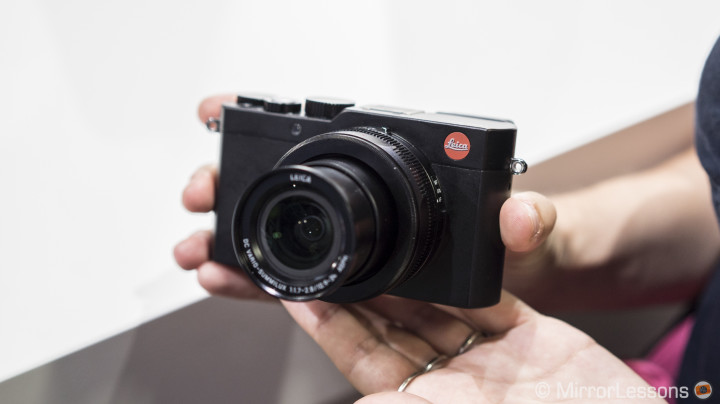
[/stextbox]
Conclusion – LX100 vs X100T
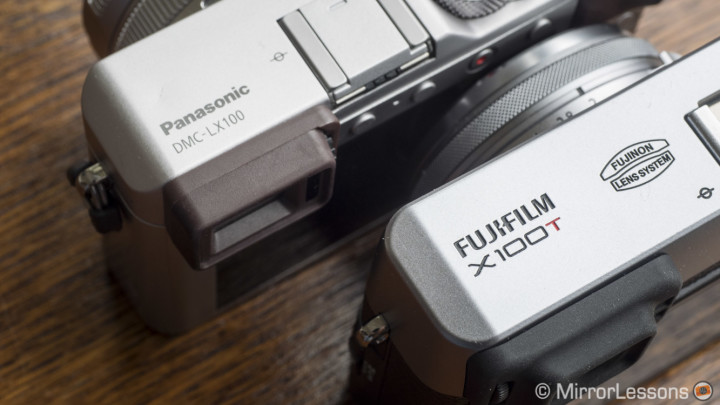
I know that I say this in most of my comparisons but I will say it again here: both cameras are great. Both cameras can deliver very good image quality and performance. To me the key differences reside in the most obvious characteristics: a zoom lens versus a fixed lens, a smaller sensor versus a bigger sensor, an electronic viewfinder versus a very advanced hybrid viewfinder.
In my opinion, the LX100 can suit a wider bracket of users than the X100T for the simple reason that it has a zoom lens that can give you both a wide angle and telephoto view of the world.
That said, you can’t expect to be able to dabble in every kind of photography with it. The longest focal length only corresponds to 75mm, which is good for portraits but not for catching animals, birds or other distant subjects. Likewise, the 24mm equivalent won’t allow you to capture expansive landscapes or entire buildings.
However, it is perfect for family and travel purposes when you want to work with something really light and small that can fit in your coat pocket.
The X100T on the other hand is a more specific camera that will appeal to a smaller niche in my opinion. It can work well as a second body for work, and the fixed prime lens will be appreciated by photographers who like to walk around with only one focal length.
The most natural genre for the X100T is street photography for various reasons that go from its design to its functionalities, but I have used its predecessor the X100s for various applications, so the X100T can do exactly the same.
I have little to say regarding image quality if not that I find the X100T colours more interesting with a more personal look than the LX100. It also delivers slightly better performance regarding ISO and dynamic range but again the difference is negligible. The LX100 however has a very good zoom lens with excellent performance.
Personally, and I do mean personally, the X100T is the camera I would always bring with me. I just feel more attached to it. But at the same time, since I write many camera reviews, I would probably recommend the LX100 more because it is more versatile. I know that this last sentence sounds like the perfect “neutral” conclusion, but it is the truth.
Choose the Panasonic LX100 if:
- you prefer the versatility of a zoom lens
- you want great video capabilities
- you want a small body but with the perfect grip and ergonomics
Choose the Fujifilm X100T if:
- you like the idea of a fixed prime lens and love street photography
- you like the idea of using an optical viewfinder
- you want a unique kind of colour reproduction
If you had to choose between the LX100 and X100T, which would you choose? Share your thoughts below!
Interesting articles about the Panasonic LX100:
First impressions of the Panasonic Lumix LX100 – Is it a worthy premium compact?
Panasonic Lumix LX100 Review Part II – Fast zoom, 4K video, 4K photo & more
Interesting articles about the Fujifilm X100T:
First impressions of the Fujifilm X100T – Let’s talk AF, MF, OVF, EVF and ERF!
